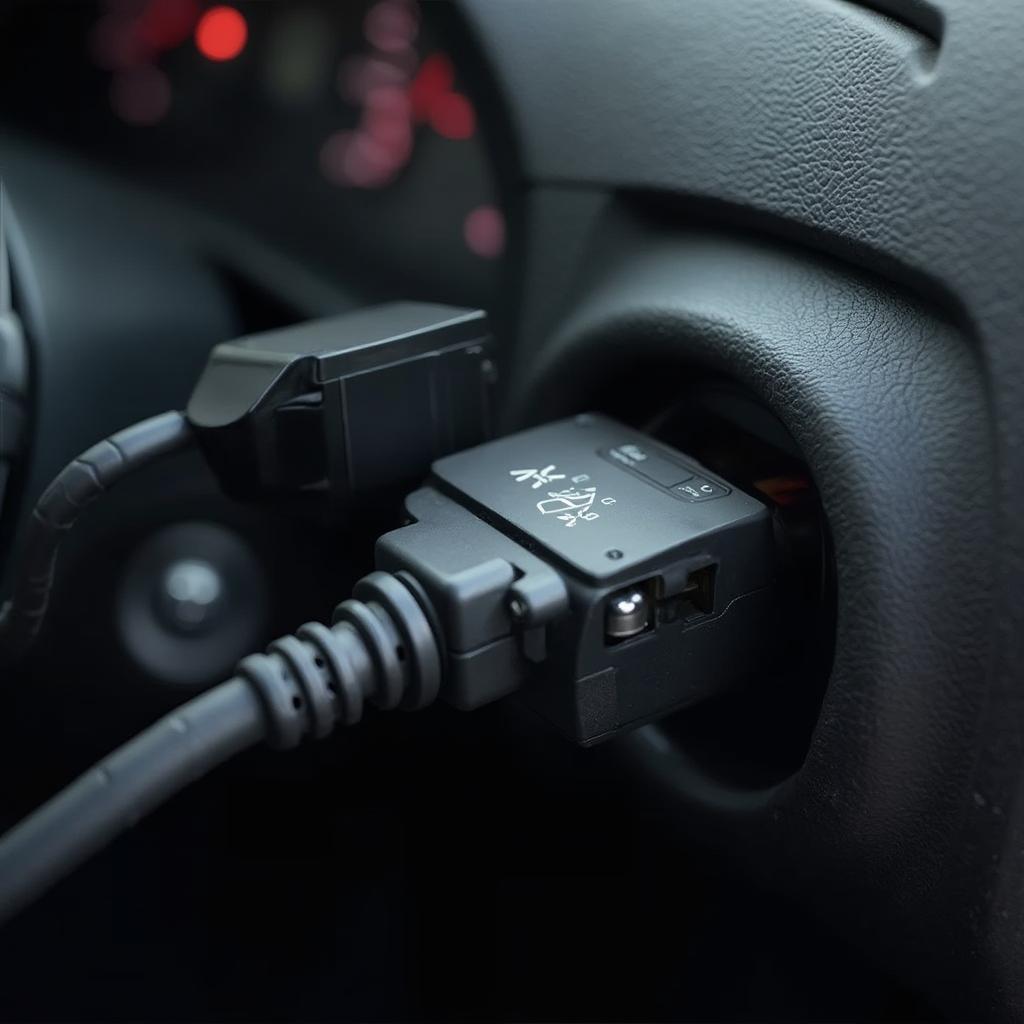The eco OBD2 fuel saver reset button has become a topic of much discussion among car owners looking to improve their fuel efficiency. This article delves deep into the functionality, benefits, and potential drawbacks of these devices, examining whether the claims of significant fuel savings hold true. We’ll explore how they work, the importance of the reset button, and what you should consider before purchasing one.
Understanding the Eco OBD2 Fuel Saver
Eco OBD2 fuel savers are small devices that plug into your car’s OBD2 port, claiming to optimize your vehicle’s engine control unit (ECU) for better fuel economy. They supposedly achieve this by modifying parameters such as fuel injection timing, air-fuel ratio, and ignition timing. The manufacturers often advertise significant fuel savings, sometimes as high as 35%. But do these claims hold water?
How Does an Eco OBD2 Fuel Saver Work?
These devices monitor the data stream from the ECU, learning your driving habits over a period of time, typically 150-200 miles. Based on this data, they supposedly adjust the ECU’s parameters to improve fuel efficiency. The reset button allows you to clear the learned data and start the learning process again, which might be necessary if driving conditions change significantly or if you switch vehicles.
 Eco OBD2 Fuel Saver Plugged into OBD2 Port
Eco OBD2 Fuel Saver Plugged into OBD2 Port
The Role of the Reset Button
The reset button on an eco OBD2 fuel saver is designed to clear the device’s memory and start the learning process afresh. This can be useful in several scenarios:
- Changing Driving Conditions: If you typically drive in city traffic and then embark on a long highway trip, resetting the device might allow it to optimize for the new driving conditions.
- Switching Vehicles: If you use the same eco OBD2 fuel saver in multiple vehicles, resetting it after switching cars allows it to adapt to the specific characteristics of each vehicle.
- Troubleshooting: If you experience any issues with the device, resetting it might resolve the problem.
Debunking the Myths: Do Eco OBD2 Fuel Savers Really Work?
While the concept sounds appealing, many experts and consumer reports suggest that eco OBD2 fuel savers offer negligible, if any, real-world fuel savings. The ECU in modern vehicles is already highly sophisticated and continuously optimizes engine performance based on various factors. It’s unlikely that a simple plug-in device can significantly improve upon the manufacturer’s programming.
Why the Skepticism?
- Lack of Scientific Evidence: There’s limited independent, peer-reviewed scientific evidence supporting the claims of significant fuel savings from eco OBD2 fuel savers.
- Oversimplified Marketing Claims: The advertised fuel savings often seem too good to be true, raising red flags.
- Potential ECU Interference: Some experts worry that interfering with the ECU’s programming could potentially void the vehicle’s warranty or even cause damage.
Alternatives to Eco OBD2 Fuel Savers
If you’re looking to improve your fuel economy, there are several proven and effective strategies:
- Proper Tire Inflation: Maintaining the correct tire pressure can significantly impact fuel efficiency.
- Regular Maintenance: Ensure your vehicle is properly maintained, including regular oil changes and air filter replacements.
- Efficient Driving Habits: Avoid aggressive acceleration and braking, and maintain a consistent speed whenever possible.
Consider Your Driving Habits
Before purchasing an eco OBD2 fuel saver, analyze your driving habits and consider whether there are other, more effective ways to improve your fuel economy.
Conclusion: The Eco OBD2 Fuel Saver Reset Button and the Reality of Fuel Savings
While the eco OBD2 fuel saver reset button offers a way to clear the device’s learned data, the overall effectiveness of these devices in significantly improving fuel economy remains questionable. Before investing in one, consider the lack of scientific evidence and explore alternative, proven methods for reducing fuel consumption. Proper maintenance, efficient driving habits, and correct tire inflation are likely to yield more tangible results.
FAQ
- What does the eco OBD2 fuel saver reset button do? It clears the device’s memory, allowing it to re-learn your driving habits.
- How much fuel can I save with an eco OBD2 fuel saver? Independent testing suggests negligible fuel savings in most cases.
- Is it safe to use an eco OBD2 fuel saver in my car? While generally safe, some experts have concerns about potential ECU interference.
- Are there better ways to improve my fuel economy? Yes, proper maintenance, efficient driving, and correct tire pressure are more effective.
- How often should I reset the eco OBD2 fuel saver? Consider resetting it if driving conditions change significantly or when switching vehicles.
- Does the eco OBD2 fuel saver void my car’s warranty? It’s possible, so consult your vehicle’s warranty information.
- Where can I find reliable information on fuel-saving strategies? Consult reputable automotive websites and consumer reports.
Contact Us
For any support or further information, please don’t hesitate to contact us via WhatsApp: +1(641)206-8880, Email: [email protected] or visit our office at 789 Elm Street, San Francisco, CA 94102, USA. Our customer service team is available 24/7.
